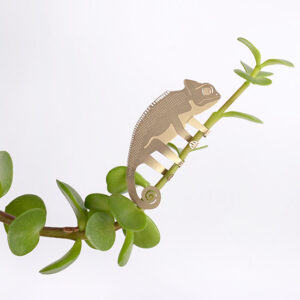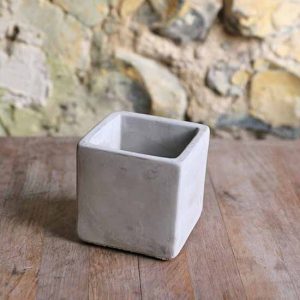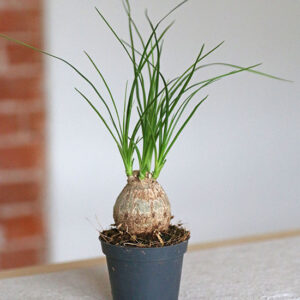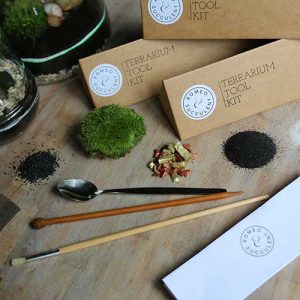HOW TO CARE FOR YOUR BEAUCARNEA RECURVATA (PONYTAIL PALM)
THE PONYTAIL PALM
Beaucarnea Recurvata AKA. Elephant foot palm
Ponytail Palms are a new houseplant owner’s dream, thriving on a brand of benign neglect that often comes part and parcel of being a newbie adjusting to a regular care schedule! Provided that you are able to follow a few golden care rules, these exotic-looking little chubbers can be an exceptionally generous and long-lived plant for your collection, either as an open air houseplant or as part of a terrarium.
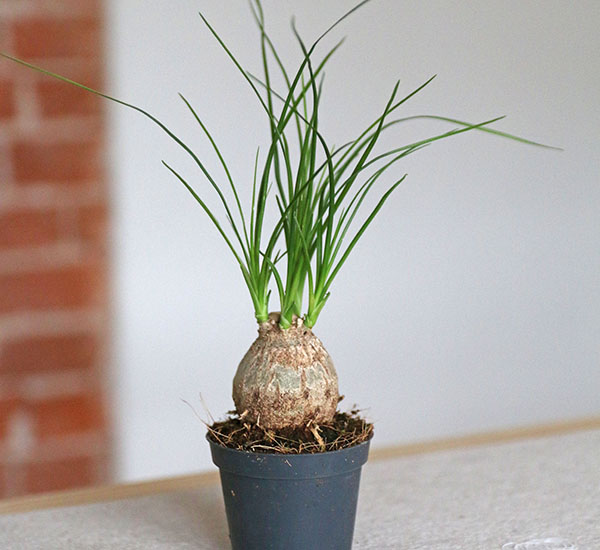
Where Does It Come From?
Firstly, (sorry to disappoint), the Ponytail Palm is not a palm. This full-bodied little plant is a succulent and actually rather closely related to families of other Central American desert plants such as agaves and yuccas. The plants are native to eastern Mexico and grow in the hot and sandy climates of the Mexican desert, away from the rainfall and high-humidity of the forest regions.
Why Should I Get One?
- This plant is so unique looking. For collectors seeking something extra quirky for a terrarium or to brighten up a pot, these bulbous little beauties are the perfect show stopper.
- Being an easy going desert succulent means that these plants are super simple to keep alive. They are not demanding in terms of time, know-how or equipment. Just water every now and then and let them thrive!
How Big Can It Grow?
Grown in ideal conditions indoors, the leathery leaves on these plants can reach up to 3-feet long, though this is rarely the case in actuality. In the plant’s native environments, these bizarre succulents have been known to grow up to 30-feet high but kept as houseplants in the UK, a height of around 4-feet is considered the maximum size. As a miniature terrarium plant, the palms can be useful to add a touch of height to your overall design.
Where Should I Keep It?
Being a desert plant, these little ‘palms’ tend to want as much sunlight as possible so full sun, or very bright indirect sunlight is best for them. They can survive in positions that are not brightly lit all day, but a good sun soaking in the morning or afternoon will be necessary for them to remain at optimum health. Soil-wise, these plants prefer a set up that simulates the conditions of their native desert homes. Sandy, pH-neutral and well-drained earth offers the ideal environment for these plants to thrive. During the colder winter months, take care to ensure that the plant is kept away from cold windows or air currents as exposure to near-freezing temperatures can cause serious damage.
How Often Should I Water It?
The general rule for Ponytail Palm care is to be frugal with your watering. In general, keep the soil fairly dry and water perhaps once weekly from spring through to autumn when the air temperatures start to drop. Allow the soil to completely dry out between waterings, which means watering only very occasionally during the winter. Good drainage is essential as the plants hate claggy soil and suffer from root rot if left in standing water too long. In the spring, a two-weekly dose of a specialised cacti or succulent fertiliser can help you keep the plant looking its best all year round.
CARE TIP: Watch out for spider mites that might occur on the leaves. You’ll know if your plant is suffering from this pest when spider-web-like patterning appears faintly on the foliage. These can be treated by rubbing soapy water on the leaves gently with a cloth.
Strikingly beautiful and very forgiving for inexperienced plant-lovers, these unusual specimens, with their chunky stems and cascading ribbon-like foliage are a real winner. Whether you’re looking to add a focal point to a terrarium, or seeking something a little more unusual to brighten up your living space, these laid-back succulents might turn out to be your dream houseplant.

